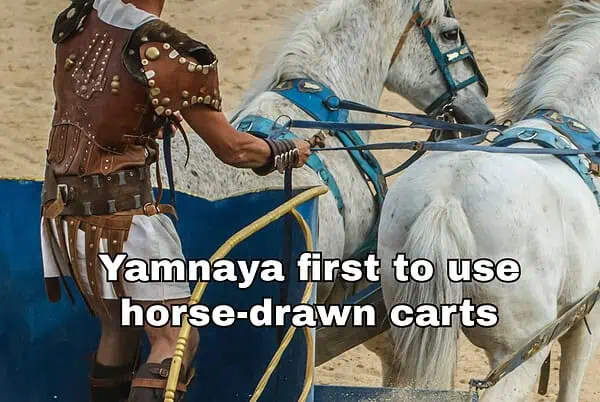Europeans with exceptional early technology
Historians, anthropologists for decades have been convinced the Mesopotamians and Egyptian cultures were most advanced in transport, basket weaving, pottery, processing of wheat and grain.
Now a major study blows that hypothesis out of the water. The history books will need to be re-written.
New evidence, indigenous Whites were the first to invent baskets for transporting of goods.
From Basketweaving.com:
 The weaving of baskets is as old as the history of man. Traces of baskets have been found in Egyptian pyramids as early as 3,000 years ago.
The weaving of baskets is as old as the history of man. Traces of baskets have been found in Egyptian pyramids as early as 3,000 years ago.
Baskets were needed for everything imaginable: food, clothing, storage, transport…
A team of researchers from Barcelona and southern Spain have re-examined baskets, a hammer, jewelry and other items found deep in the Cave of Bats (Cueva de los Murcielagos). Three baskets in particular were in excellent shape.
They were confirmed to be between 7k and 10k years old. Europeans confirmed yet again to be the most advanced hominin population.
The baskets were discovered 200 years ago. But they have only recently been reexamined and analyzed by experts.
Ruth Schuster at Haaretz explains,
Earliest Baskets in Europe, From Almost 10,000 Years Ago, Found in Spanish Cave
Elaborate baskets made of tough local grass were used by hunter-gatherers to bury their dead at Cueva de los Murciélagos, while early farmers also turned their hand to sandals…
Additionally:
 In southern Spain’s Cave of the Bats, starting almost 10,000 years ago, people buried their dead with stunningly crafted baskets that wouldn’t shame the finest arts and crafts markets today.
In southern Spain’s Cave of the Bats, starting almost 10,000 years ago, people buried their dead with stunningly crafted baskets that wouldn’t shame the finest arts and crafts markets today.
Armed with elaborate baskets made of the tough local grass, the first to bury their loved ones at Cueva de los Murciélagos were hunter-gatherers in the Mesolithic (at the tail end of the Ice Age).
That activity then ceased for about 2,000 years, at which point a new population appeared in the cave: early farmers of the Neolithic, who interred their dead with a different type of woven-ware – and sandals too, using the same raw material. In other words, the woven and wood artifacts were produced in the Mesolithic and Neolithic periods by different populations, and show evolution of technique over time.
The American Association for the Advancement of Science explains:
The rare collection of perishable artifacts range from more than 9,500 years ago to about 6,200 years ago.
Magdalenians were in Spain at this time. They were descendants of early Cro-Magnon and Gravettians from central Europe.
More from the Smithsonian:
 “My first reaction was, ‘Oh my God, that is not possible,’” lead researcher Francisco Martinez-Sevilla, who studies prehistory at the University of Alcalá in Spain, says to the New York Times’ Rachel Chaundler. “When we realized the magnitude of the findings, we published the paper with all the analysis in less than a year.”
“My first reaction was, ‘Oh my God, that is not possible,’” lead researcher Francisco Martinez-Sevilla, who studies prehistory at the University of Alcalá in Spain, says to the New York Times’ Rachel Chaundler. “When we realized the magnitude of the findings, we published the paper with all the analysis in less than a year.”
Continuing:
The new paper, published last week in the journal Science Advances, dated 76 objects found during 19th-century mining activities in the Cueva de los Murciélagos, which translates literally to cave of the bats, near the city of Granada, Spain. The prehistoric items were made from organic materials including wood, reed and esparto, or Stipa tenacissima, a grass crushed to make twine.
And now there is evidence for basket weaving even earlier than Spain.
From mymodernnet.com 2023,
An Early History of Basket Weaving
The earliest potential evidence of woven baskets dates back to circa 25,000 BCE. Archeologists discovered Stone Age clay imprints of tightly woven material at the ancient Pavlov site in the Czech Republic. While the exact use of the woven material is unclear, the technology for basketry was clearly known.
Expert artisans on the European continent
From from Britannica on the unique techniques of European basket weaving in contrast to less advanced cultures:
In Europe almost the whole range of basketry techniques is used, chiefly in making utilitarian objects (receptacles for domestic and carrying purposes and household furniture) but also in making objects primarily for decorative use.



Weaving BASKETS?
That be nothing. Black folk have long mastered the art of the weave.
https://afrolovely.com/who-invented-the-hair-weave/